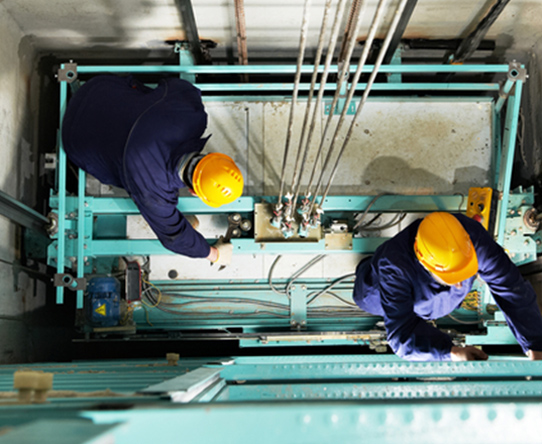Essential Guide to Recognizing Handicapped Platform Lifts and Their Performance
Comprehending the intricacies of disabled system lifts goes past simple recognition; it calls for an extensive grasp of their capability and design. From the numerous types readily available to the vital components that make them operational, each facet contributes to the smooth procedure of these vital availability tools. Moreover, the rigid safety policies and upkeep considerations related to platform lifts are vital in guaranteeing their reliability and durability. By exploring these aspects thoroughly, one can gain a profound understanding of just how these lifts not only enhance access but also focus on user safety and comfort.
Kinds of Handicapped Platform Lifts
There are a number of kinds of handicapped platform lifts created to provide access for individuals with mobility challenges. Inclined platform lifts, on the various other hand, are appropriate for areas where a vertical lift may not be viable due to building restrictions.
Another sort of disabled system lift is the portable lift, which provides adaptability and ease. These lifts can be easily moved from one place to another, making them ideal for short-lived events or situations where a permanent installation is not feasible. Additionally, outdoor system lifts are developed to stand up to differing weather conditions, permitting individuals to accessibility outside rooms easily and independence. Each sort of impaired system lift serves a distinct purpose in enhancing ease of access and enhancing the top quality of life for people with movement challenges.
Secret Elements and Systems
Impaired platform lifts, such as vertical and inclined lifts, count on certain essential parts and devices to make sure smooth and safe transportation for individuals with flexibility challenges. One essential part of these lifts is the platform itself, which offers as the foundation for transporting individuals - lift service companies. The platform is developed to be strong, sizable sufficient to fit mobility devices or wheelchair tools, and geared up with safety functions such as guardrails and non-slip surface areas to avoid mishaps throughout transit

Furthermore, safety sensors and emergency situation stop switches are integrated right into handicapped system raises to enhance lift service companies customer safety and stop crashes. These parts interact to create a dependable and effective transport remedy for people with flexibility problems.
Installation and Maintenance Considerations

Normal upkeep is equally vital to maintain handicapped platform lifts running smoothly. By focusing on appropriate installation and diligent maintenance practices, the longevity and efficiency of impaired system lifts can be made best use of, profiting official statement both individuals and center supervisors.
Safety And Security Attributes and Rules
Ensuring compliance with safety guidelines is vital when evaluating the efficiency of safety and security features in disabled system lifts. These lifts undergo certain safety and security criteria to safeguard customers, making it crucial for producers and drivers to comply with these laws. Safety and security attributes generally found in impaired system lifts consist of emergency situation quit buttons, safety obstacles, interlocks, and under-platform sensing units. Emergency quit switches permit instant stopping of the lift in situation of an emergency situation, while safety barriers prevent individuals from accidentally diminishing the platform. Interlocks make certain that the lift doors are securely closed prior to the lift operates, improving customer safety and security. Under-platform sensors identify blockages beneath the lift, preventing it from coming down if an item remains in the means. Furthermore, routine maintenance and assessments are needed to guarantee that safety attributes are operating appropriately and in conformity with policies. By focusing on safety functions and sticking to regulations, disabled system lifts can offer risk-free and reliable transportation for individuals with handicaps.
Advantages of Utilizing System Lifts
Compliance with safety laws and the execution of necessary security features in impaired platform lifts add to the general benefits of making use of these lifts for individuals with disabilities. Past safety, system lifts use a range of benefits that boost access and comfort. On the whole, the comfort, visit self-reliance, and inclusivity helped with by system raises significantly improve the high quality of life for people with specials needs, making them an indispensable ease of access option.

Verdict
Finally, impaired system lifts been available in numerous kinds with essential elements and devices that enable risk-free and reliable procedure. Setup and upkeep considerations are crucial for making certain appropriate functionality. Safety and security features and policies must be followed at all times to avoid crashes - lift service companies. The benefits of using platform lifts include increased accessibility and self-reliance for individuals with disabilities.